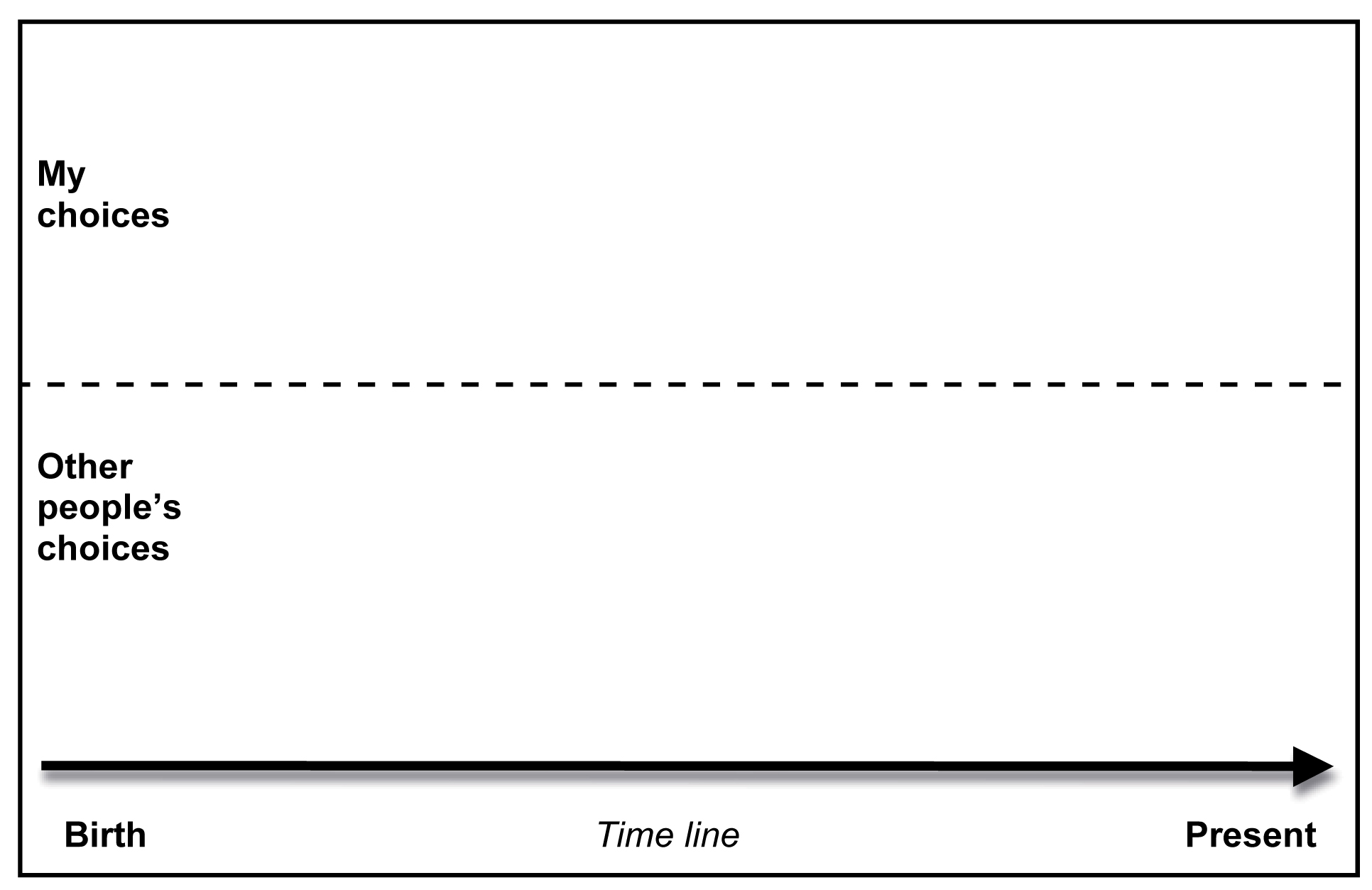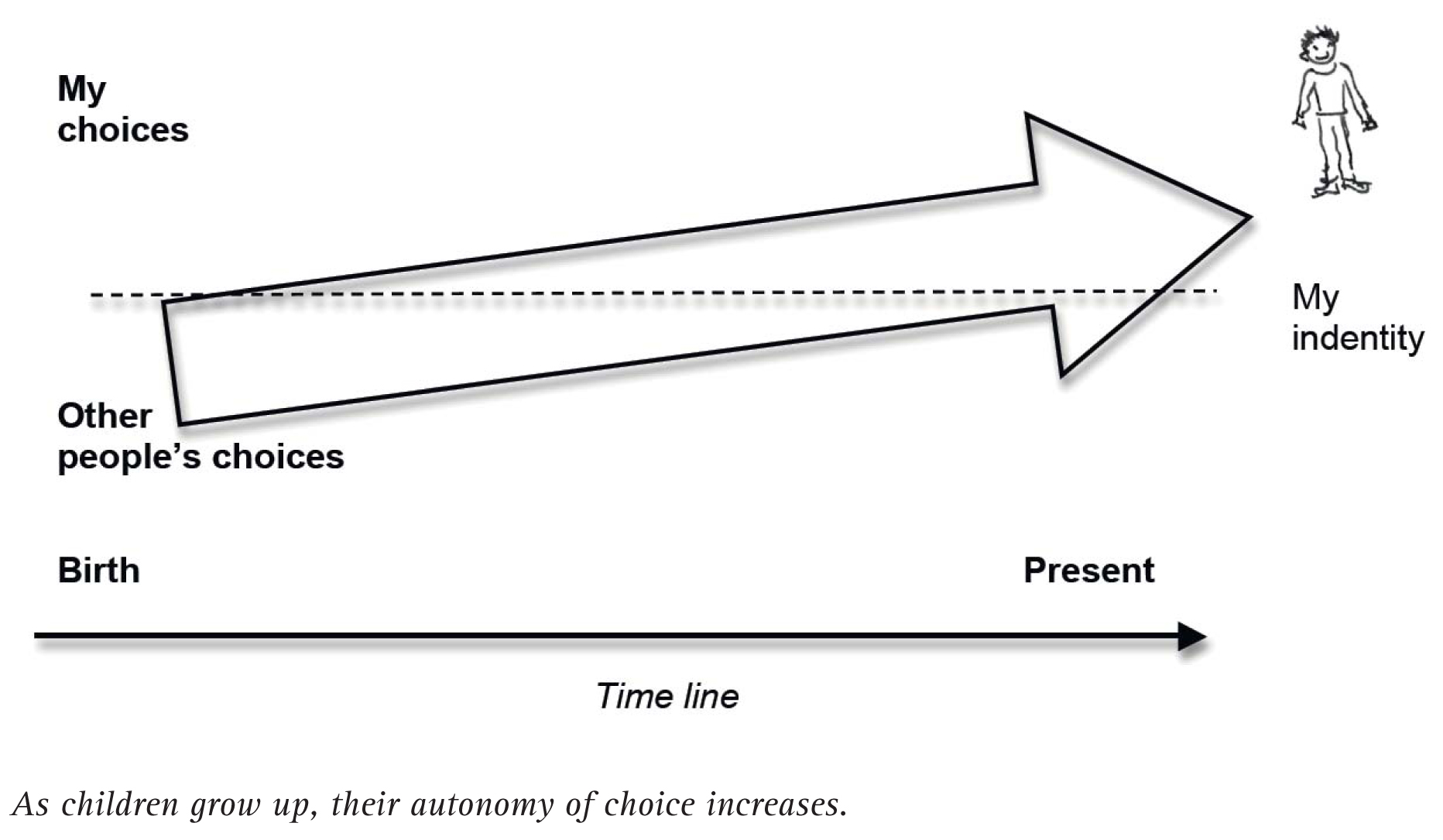Lesson 2: Looking back: what choices made me the person I am?
Living Democracy » Textbooks » Taking part in democracy » Part 1: Taking part in the community » UNIT 1: IDENTITY » Lesson 2: Looking back: what choices made me the person I am?What choices have had the strongest impact on my life?
| This matrix sums up the information a teacher needs to plan and deliver the lesson. Competence training refers directly to EDC/HRE. The learning objective indicates what students know and understand. The student task(s), together with the method, form the core element of the learning process. The materials checklist supports lesson preparation. The time budget gives a rough guideline for the teacher’s time management. |
|
| Competence training | The autobiographic perspective. |
| Learning objective | Our choices, and those of others, have a decisive impact on our lives. |
| Student tasks | The students reflect on what choices had a strong impact on their lives. |
| Materials and Resources | Student handout 1.1. Flipcharts, strips of paper (A6), markers in different colours, glue or tape. |
| Method | Individual work. Plenary discussion. |
| Time budget | 1. The students explore what choices affected their lives. (15 min) |
| 2. The students share their findings. (15 min) | |
| 3. The students discuss and reflect on their findings. (10 min) | |
Information boxTo a considerable extent, choices shape our identities. In this lesson, the students look back on their lives. In the following lesson, they switch their perspective and look forward into the future. The key question remains the same – by making choices, how do we shape our lives, and each other’s too? In this lesson, the students first reflect on their biographies in the context of this key question. Then they share some of their findings in the plenary session and compare them. |
Lesson description
Preparations
Before the lesson begins, the teacher attaches a flipchart to the wall or the blackboard and copies the diagram from student handout 1.1.

1. The students explore what choices have affected their lives
The teacher introduces the task
The teacher introduces the key task of this lesson. The big Version of the handout on the flipcharts serves as reference. The teacher recalls the last lesson: the students made choices, and this activity alone gave an insight into their different personalities. This lesson adopts a different perspective: what impact have choices had on our identities and our development in life? And who has made these choices? We ourselves? Or other people?
The chart on the flipcharts is the same as that on the handout that the students will receive. In the top half, the students note choices that they themselves have made, in the bottom half they note choices made by others. The timeline, running from left to right, Covers their lifespan from birth to the present. The students can therefore indicate when a certain choice affected their identities.
The students adopt an autobiographic perspective
The students receive their copies of student handout 1.1 and work on their own in silence (10-15 minutes). They reflect on their personal experience from an autobiographic perspective. They are experts on their own behalf. Because of its intimate nature, the topic and the Information is extremely important for each student, and they should decide what to share with the class in the following phase of the lesson.
2. Comparing the students’ experience
Introduction to the task
The teacher introduces the next step. Now the students may share some of their findings. Each student receives two pieces of A6 size paper and markers (these can be shared, if necessary). Only one piece of information – one choice – is to be noted on each strip of paper, as the strips are to be linked to other student’s notes.
The teacher adds years to the timeline, beginning with the birth year of the oldest student, and ending with the present.
Now the students select one or two points from their autobiographic reflections, using the follow-ing criteria:
- What choice has had a particularly strong impact on my identity?
- What piece of information am I willing to present in class?
The students should indicate who made the choice (“I”, “mother”, “friend” …), and when it was made, but they should not add their own names.
The students produce a general survey of key choices
The students fill in one or two sheets of paper, as instructed by the teacher, and put them face down on their tables. A team of four students collects them and brings them to the flipcharts.
The students gather round the flipchart in a semicircle – in two rows, if necessary. One student from the team reads the entries to the class. A team member suggests where to attach it on the charts. If repetitions occur, the entry on the flipchart stands for all the others; these are counted, the amount is recorded, and the text on the flipchart is framed to emphasise its importance. The team co-operates with the class, so that all students take part in the emergence of their shared records, and participate in creating them.
3. The students discuss and reflect on their findings
Looking for patterns and significant elements
The material is new to all, so the content can hardly be anticipated. Quite often the students need no guidance or starting point, but begin to make comments immediately.
If necessary, the teacher points out that the next step is to identify striking patterns or details.
A few patterns are likely to appear:
Adolescence – increasing autonomy: In early childhood, others make choices (parents, family, teachers, doctors). As we grow older, we make more choices ourselves. Thus, there are likely to be clusters of entries on the flipchart, and these may be highlighted by the symbol of an arrow point-ing upwards – the shift towards more autonomy and personal responsibility as we grow older. A student may add the arrow to the chart (see below).
“I owe my existence to my parents”: This is the starting point in our biographies that we all share. It is as elementary as it is obvious. We have our roots in our families.
Diversity and pluralism: Perhaps no pattern can be detected. This points to the phenomenon of pluralism – we differ in our development, and our choices have made us become individual personalities.


